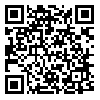Volume 4, Issue 16 (12-2014)
NCMBJ 2014, 4(16): 17-22 |
Back to browse issues page
Download citation:
BibTeX | RIS | EndNote | Medlars | ProCite | Reference Manager | RefWorks
Send citation to:



BibTeX | RIS | EndNote | Medlars | ProCite | Reference Manager | RefWorks
Send citation to:
Bakhshipour Miyandeh H, Mehregan I, Saadatmand S, Golein B. Assessment of genetic diversity in unknown and commercially citrus cultivars of north of Iran using SSR markers. NCMBJ 2014; 4 (16) :17-22
URL: http://ncmbjpiau.ir/article-1-357-en.html
URL: http://ncmbjpiau.ir/article-1-357-en.html
Science and Research Branch , hajar.bakhshipour@yahoo.com
Abstract: (9568 Views)
Aim and Background: Understanding phylogenic relationships and genetic diversity in Citrus is considered to be important in clarifying their genetic relationships, germplasm characterization and the registration of new varieties. There are some Citrus biotypes in the country Citrus collections which have been classified merely based on their morphological traits and many genetic researches were not done on them. Molecular markers would help to infer their relations with known cultivars.
Materials and Methods: In order to investigate about phylogenic relationships among 45 Citrus genotypes including 33 unknown local genotypes and 12 commercially important Citrus varieties at the collection in Agricultural Research Institute of Kotra, Ten SSR primer pairs were used. DNA was extracted from young leaf tissues according to the procedure of Murry and Thompson (1980). One SSR primer was chosen from each corn chromosome and totally ten primers were assayed using the sample of 45 genotypes. The amplified products were separated using 6% polyacrylamide gel with 7 M urea under denaturing conditions and visualized by staining with silver nitrate. Gels were then scored based on either the presence or absence of bands. Polymorphism information content (PIC) for each SSR marker was determined with 1- Σfi 2- Σ2fi2 fj2 where fi is the frequency of the ith allele and fj is frequency of the ith allele + 1. Estimation of genetic similarities was done among these lines using the NTSYS program. The 45 genotypes were clustered based on the matrix of Jaccard genetic similarity using the complete clustering algorithm.
Results: Ten primers revealed 0.685 polymorphism rate. The number of alleles per locus ranged from 3 to 13. Among all, 72 alleles were identified. Cluster analysis was resulted in designating the 45 samples into six major groups. Orange, mandarin and 24 unknown genotypes into group A, grapefruit, Pummelo, sour orange and six unknown genotypes into group B, three unknown genotypes into group C, two unknown genotypes and Yuzo into groups D and E, citron, Eureka lemon, sweet lime, Mexican lime and two unknown genotypes into group F. Conclusion: SSR markers revealed different levels of diversity which can be useful in germplasm and genetic resources management. Genetic diversity and phylogenetic analysis in Citrus provide useful information for further breeding programs, selection, and registration of new varieties.
Materials and Methods: In order to investigate about phylogenic relationships among 45 Citrus genotypes including 33 unknown local genotypes and 12 commercially important Citrus varieties at the collection in Agricultural Research Institute of Kotra, Ten SSR primer pairs were used. DNA was extracted from young leaf tissues according to the procedure of Murry and Thompson (1980). One SSR primer was chosen from each corn chromosome and totally ten primers were assayed using the sample of 45 genotypes. The amplified products were separated using 6% polyacrylamide gel with 7 M urea under denaturing conditions and visualized by staining with silver nitrate. Gels were then scored based on either the presence or absence of bands. Polymorphism information content (PIC) for each SSR marker was determined with 1- Σfi 2- Σ2fi2 fj2 where fi is the frequency of the ith allele and fj is frequency of the ith allele + 1. Estimation of genetic similarities was done among these lines using the NTSYS program. The 45 genotypes were clustered based on the matrix of Jaccard genetic similarity using the complete clustering algorithm.
Results: Ten primers revealed 0.685 polymorphism rate. The number of alleles per locus ranged from 3 to 13. Among all, 72 alleles were identified. Cluster analysis was resulted in designating the 45 samples into six major groups. Orange, mandarin and 24 unknown genotypes into group A, grapefruit, Pummelo, sour orange and six unknown genotypes into group B, three unknown genotypes into group C, two unknown genotypes and Yuzo into groups D and E, citron, Eureka lemon, sweet lime, Mexican lime and two unknown genotypes into group F. Conclusion: SSR markers revealed different levels of diversity which can be useful in germplasm and genetic resources management. Genetic diversity and phylogenetic analysis in Citrus provide useful information for further breeding programs, selection, and registration of new varieties.
Type of Study: Research Article |
Subject:
Cellular and molecular
Received: 2013/07/20 | Accepted: 2014/07/14 | Published: 2014/12/27
Received: 2013/07/20 | Accepted: 2014/07/14 | Published: 2014/12/27
Send email to the article author
| Rights and permissions | |
 |
This work is licensed under a Creative Commons Attribution-NonCommercial 4.0 International License. |





